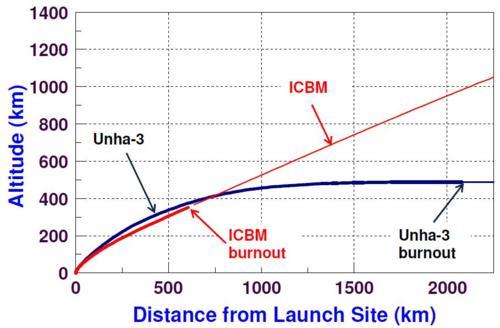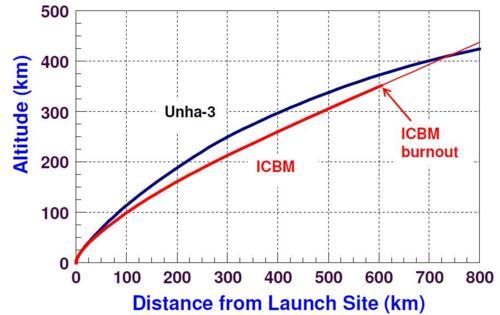
Figure 1.
A number of people have asked whether it’s possible to tell from the path the rocket follows whether the North Korean launch is intended to place a satellite into orbit or is really a long-range missile launch. It is possible to differentiate, since both the shape of the trajectory and the burntime of the rocket would differ for a satellite launcher and a missile.
Figure 1 compares the early part of the trajectory of a typical liquid-fueled ballistic missile with a range of 12,000 km (red) and the likely Unha-3 satellite launch trajectory (blue). The satellite launcher flies on a steeper trajectory early on to get the satellite to a high altitude and then onto a horizontal path that will put it into orbit. The rocket engines for a satellite launcher also typically burn for much longer than those for an ICBM. In this example, the ICBM burns for 300 seconds and the Unha-3 burns for 590 seconds. The ICBM gets up to high speed much faster.
Figure 2 shows a blowup of the early part of those trajectories.

Figure 2.
Previous post on North Korea. Next post.
